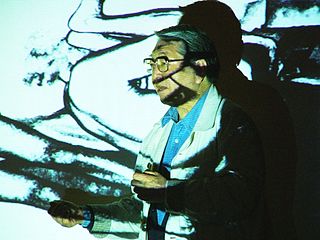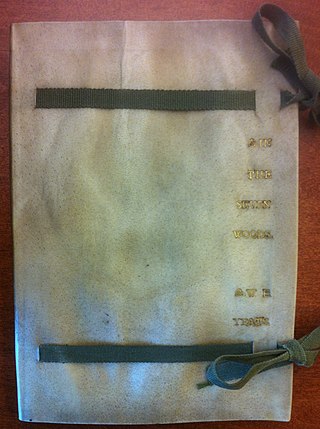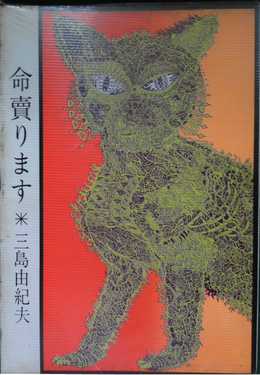Related Research Articles

William Butler Yeats was an Irish poet, dramatist and writer, and one of the foremost figures of 20th-century literature. He was a driving force behind the Irish Literary Revival, and along with Lady Gregory founded the Abbey Theatre, serving as its chief during its early years. He was awarded the 1923 Nobel Prize in Literature, and later served two terms as a Senator of the Irish Free State.

Emer, in modern Irish Eimhear or Éimhear and in Scottish Gaelic Eimhir, is the name of the daughter of Forgall Monach and the wife of the hero Cú Chulainn in the Ulster Cycle of Irish mythology.

Yukio Mishima, born Kimitake Hiraoka, was a Japanese author, poet, playwright, actor, model, Shintoist, nationalist, and founder of the Tatenokai. Mishima is considered one of the most important post-war stylists of the Japanese language. He was considered for the Nobel Prize in Literature five times in the 1960s—including in 1968, but that year the award went to his countryman and benefactor Yasunari Kawabata. His works include the novels Confessions of a Mask and The Temple of the Golden Pavilion, and the autobiographical essay Sun and Steel. Mishima's work is characterized by "its luxurious vocabulary and decadent metaphors, its fusion of traditional Japanese and modern Western literary styles, and its obsessive assertions of the unity of beauty, eroticism and death", according to author Andrew Rankin.

Isabella Augusta, Lady Gregory was an Anglo-Irish dramatist, folklorist and theatre manager. With William Butler Yeats and Edward Martyn, she co-founded the Irish Literary Theatre and the Abbey Theatre, and wrote numerous short works for both companies. Lady Gregory produced a number of books of retellings of stories taken from Irish mythology. Born into a class that identified closely with British rule, she turned against it. Her conversion to cultural nationalism, as evidenced by her writings, was emblematic of many of the political struggles that occurred in Ireland during her lifetime.

Eikoh Hosoe is a Japanese photographer and filmmaker who emerged in the experimental arts movement of post-World War II Japan. Hosoe is best known for his dark, high contrast, black and white photographs of human bodies. His images are often psychologically charged, exploring subjects such as death, erotic obsession, and irrationality. Some of his photographs reference religion, philosophy and mythology, while others are nearly abstract, such as Man and Woman # 24, from 1960. He was professionally and personally affiliated with the writer Yukio Mishima and experimental artists of the 1960s such as the dancer Tatsumi Hijikata, though his work extends to a diversity of subjects. His photography is not only notable for its artistic influence but for its wider contribution to the reputations of his subjects.
Anne Butler Yeats was an Irish painter, costume and stage designer.

Nagai Naoyuki, also known as Nagai Genba or Nagai Mondonoshō, was a Japanese hatamoto under the Tokugawa of Bakumatsu period Japan.

Acts of Worship is a 1965 short story collection by the Japanese writer Yukio Mishima. Kimitake Hiraoka, or better known as Yukio Mishima was a one of Japan's most famous authors. In addition, he is also known as being one of the greatest writers of the 20th century due to both his fictional and non-fictional works. His work, "Acts of Worship" took him most of Yukio Mishima's career to complete. "Act of Worship" consists of seven stories titles "Fountains in the Rain", "Raisin Bread", "Sword" "Sea and Sunset", "Cigarette", "Martydom", and finally "Act of Worship". The story titled "Sword" may be the most typical one out of the seven.

On Baile's Strand is a play written by W. B. Yeats and first printed in In the Seven Woods published by Dun Emer Press in 1903. The play was first performed at the grand opening of the Abbey Theatre on 27 December 1904. The play is based around the Irish mythological hero Cuchulain.
Aya no Tsuzumi is a Japanese Noh play by an unknown author, written in the 15th century.
Cuchulain of Muirthemne is a version of the Cú Chulainn legends based on previous oral and written versions, as collected and translated by Lady Augusta Gregory. First published in 1902, it is one of the earliest such collections to appear in English. The book covers the lifespan of the hero, from conception to death, and draws on folklore and oral tradition in addition to the stories of the Ulster Cycle.
"To the Rose upon the Rood of Time" is poem by W. B. Yeats that was published in The Rose in 1893. The poem is one of many early Yeatsian lyrical poems which utilize the symbol of the rose. The poem consists of twelve rhyming couplets in iambic pentameter.
Five Modern Noh Plays is a collection of plays written by Japanese writer Yukio Mishima. Mishima wrote these plays between 1950 and 1955 and presented them as modern plays in Tokyo. Of these five, only The Damask Drum was expressed in the traditional Noh fashion. The Lady Aoi was expressed as a Western-style opera. The plays take older Nō plots or traditional and foreign fairy tales and bring them to a modern setting.
Takehiro Hira is a Japanese theatre, film, and television actor.

Richard Appignanesi is a Canadian writer and editor. He was the originating editor of the internationally successful illustrated For Beginners book series, as well as the author of several of the series' texts. He is a founding publisher and editor of Icon Books. He was founding editor of the Manga Shakespeare series. He is a former executive editor of the journal Third Text, and reviews editor of the policy studies journal Futures.

Life for Sale is a 1968 novel by Yukio Mishima. It was first serialised twenty-one times in the weekly magazine Weekly Playboy between 21 May 1968 and 8 October 1968. It was published in hardcover format by Shueisha on 25 December 1968. It was published in paperback by Chikuma Bunko on 24 February 1998. The novel was translated into English by Stephen Dodd and published in paperback format in the United Kingdom by Penguin Classics on 1 August 2019. The English translation received a wider release in paperback by Vintage International on 21 April 2020.

The Frolic of the Beasts is a 1961 novel by Yukio Mishima. It is considered a minor work from Mishima's middle period. Drawing inspiration from Noh plays, specifically the 14th-century Motomezuka, the novel centers on a tragic love triangle depraved by adultery and violence. It is a short novel in length and has a nonlinear narrative structure. The novel was first serialised thirteen times in the weekly magazine Shukan Shincho between 12 June 1961 and 4 September 1961. It was published in hardcover format by Shinchosha on 30 September 1961. It was published in paperback by Shincho Bunko on 10 July 1966. The novel was translated into Italian by Lydia Origlia and published by Feltrinelli in September 1983. The novel was translated into English by Andrew Clare and published in paperback format in the United States and Canada by Vintage International on 27 November 2018. Clare's translation was later published in paperback in the United Kingdom by Penguin Modern Classics on 4 April 2019. The English translation was re-released in the United Kingdom on 2 November 2023 as part of Penguin's Japanese Classics series.

The Hawk's Well Theatre opened in Sligo Town on 12 January 1982. Located next to Sligo's tourist office, it was the first purpose-built theatre in rural Ireland.
"Star" is a short story by Yukio Mishima. It was originally published in the November 1960 issue of Gunzo, a literary magazine published by Kodansha. It was later included alongside "Patriotism" and "Hyakuman'en senbei" in the short story collection of the same name, Sutā (スタア), which was published on 30 January 1961 by Shinchosha.
Alice Berger Hammerschlag née Berger was an Austrian artist. She settled in Belfast and while creating abstract paintings also had a number of creative and administrative roles in Northern Ireland.
References
- Felton, Robert Todd (2007). A Journey into Ireland's literary revival. Berkeley : Roaring Forties Press. ISBN 9780976670674. OCLC 493894846.
- Yeats, W. B. Selected Plays. London: Penguin Books, 1997.